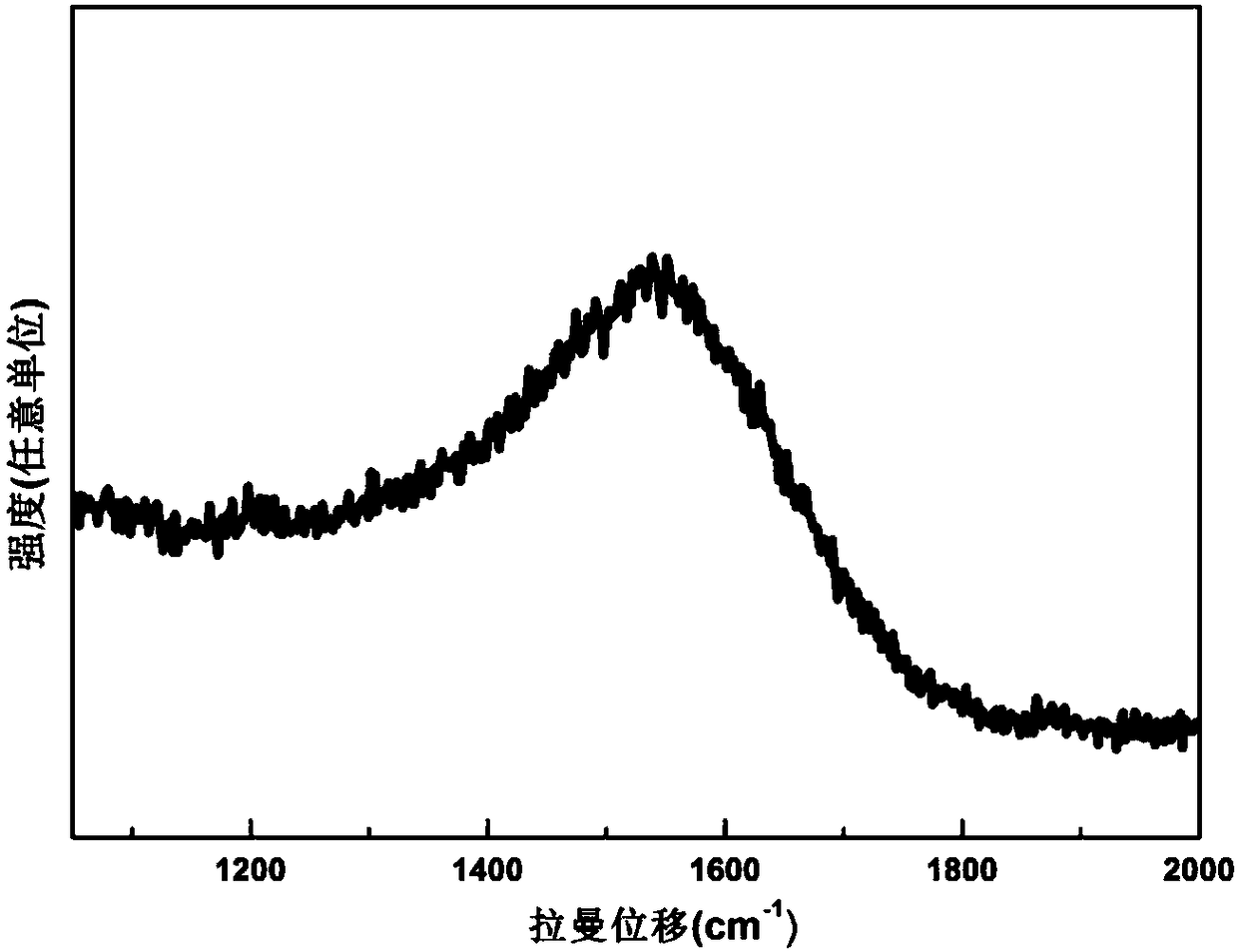Graphene preparation method
A technology of graphene and high-purity graphite, which is applied in the field of graphene, can solve the problems of long preparation time, difficulty in wide application, and high cost, and achieve the effects of improving surface smoothness, simple and easy process, and reducing formation temperature
- Summary
- Abstract
- Description
- Claims
- Application Information
AI Technical Summary
Problems solved by technology
Method used
Image
Examples
Embodiment 1
[0031] Step 1: The substrate Si is ultrasonically cleaned in an alcohol solution, and then dried.
[0032] Step 2: Depositing amorphous carbon film
[0033] Using a cathode vacuum arc source film deposition device, the device structure is as figure 1 versus 2 As shown, it includes a cathode vacuum arc evaporation source 39, a magnetic filter part, and a thin film deposition vacuum chamber 23 installed with a substrate, which are sequentially sealed and connected.
[0034] Among them, the cathodic vacuum arc evaporation source 39 includes a trapezoidal cylindrical cathode 1, a cylindrical annular anode coaxial with the cathode 1, a trigger electrode 12 for igniting an arc, and a pneumatic trigger electrode 12 arranged between the cathode 1 and the anode 2. Valve 14. In this embodiment, the trigger electrode 12 is a pilot arc needle. The permanent magnet 9 and the anode 2 are coaxially placed on both sides of the cathode 1. The permanent magnet 9 is connected to a threaded rod 11. Sc...
Embodiment 2
[0051] Step 1: The substrate is the same as in Example 1, and the processing method is the same as Step 1 in Example 1;
[0052] Step 2: Depositing amorphous carbon film
[0053] It is basically the same as step 2 in embodiment 1, except that the coating conditions in step 2 are as follows:
[0054] Pass in argon gas 20sccm, arc current is 60A, elbow is applied with DC positive bias voltage of 10V, the magnitude of pulse negative bias voltage applied to the substrate is -100V, pulse frequency is 350KHz, and pulse width is 1.1μs;
[0055] Under the coating conditions for 8 min, the thickness of the deposited film is 15 nm.
[0056] Step 3: Same as step 3 in embodiment 1;
[0057] Step 4: Using a vacuum annealing furnace, the vacuum degree in the furnace reaches 3.0×10 -2 Pa. After the temperature reaches 450° C., the substrate Si after the above-mentioned vapor-deposited catalyst film is put into the substrate, kept for 20 minutes, and then air-cooled.
[0058] Raman spectroscopy was perfo...
Embodiment 3
[0060] Step 1: The substrate is the same as in Example 1, and the processing method is the same as Step 1 in Example 1;
[0061] Step 2: Depositing amorphous carbon film
[0062] It is basically the same as step 2 in embodiment 1, except that the coating conditions in step 2 are as follows: argon gas 20sccm, arc current 60A, elbow tube applies DC positive bias voltage 10V, substrate applies pulse negative bias voltage The size is -100V, the pulse frequency is 350KHz, and the pulse width is 1.1μs;
[0063] Under the coating conditions for 10 minutes, the thickness of the deposited film is 20 nm.
[0064] Step 3: Rinse the substrate Si after depositing the amorphous carbon film with a high-purity nitrogen gun and put it into a vacuum coating room. Use electron beam evaporation technology to prepare a copper catalyst film on the surface of the amorphous carbon film. The coating conditions are: pumping Vacuum to 2×10 - 3 Below Pa, set the electron gun power to 20W and the deposition rate...
PUM
| Property | Measurement | Unit |
|---|---|---|
| thickness | aaaaa | aaaaa |
| surface roughness | aaaaa | aaaaa |
| angle | aaaaa | aaaaa |
Abstract
Description
Claims
Application Information
 Login to View More
Login to View More - R&D
- Intellectual Property
- Life Sciences
- Materials
- Tech Scout
- Unparalleled Data Quality
- Higher Quality Content
- 60% Fewer Hallucinations
Browse by: Latest US Patents, China's latest patents, Technical Efficacy Thesaurus, Application Domain, Technology Topic, Popular Technical Reports.
© 2025 PatSnap. All rights reserved.Legal|Privacy policy|Modern Slavery Act Transparency Statement|Sitemap|About US| Contact US: help@patsnap.com



